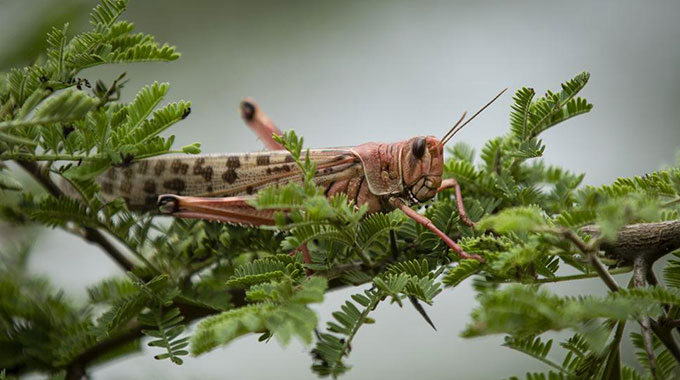
Africa’s worst locust plague in decades is threatening the continent at an unprecedented scope. And there’s no telling just how far the ravenous creatures will travel.
Desert locusts are the most destructive of all locust species — known for their speedy growth and enormous appetites. A swarm containing hundreds of millions of locusts can travel 144km day, and each insect can eat its own weight in food.
To put it into perspective, an expert told the Wall Street Journal that “a swarm the size of Manhattan can consume as much food in a day as the population of the New York tri-state area.”
The insects have already destroyed hundreds and thousands of acres of crops in East Africa, and the UN is calling for international help to quell the crisis. They fear the numbers could grow 500 times by June and reach 30 different countries.
Desert locusts are the most notorious — and damaging — breed of locust. They’re found in around 30 countries throughout Africa, Asia, and the Middle East, and can swarm through one-fifth of the landmass on Earth.
Each locust in a swarm can eat its own weight in food per day. A small portion of an average swarm eats around the same amount as 10 elephants, or 2 500 people.
A swarm can spread over (1 190 sq\km), with 40 million to 80 million locusts per 1,2 sq\km).
Author Laura Ingalls Wilder describes how terrifying a swarm can be in her book On the Banks of Plum Creek. She wrote that she could feel the insects squishing beneath her feet and hear and the sound of “millions of jaws biting and chewing.”
During plague recessions, or “quiet periods,” desert locusts typically live in very dry areas of Africa, the Middle East, and South-West Asia that receive fewer than eight inches of rain per year.
Locust plagues have been recorded since ancient Egypt, but there’s no evidence to suggest plagues occur with any regularity, making them difficult to track.
In 1875, the largest locust plague in history turned US skies black, when a swarm 2 896km long and 177km wide flew over the Midwest. Scientists believe there were trillions of “Rocky Mountain Locusts,” a type of insect that’s now extinct.
But today’s desert locusts are just as havoc-wreaking. According to Dominique Burgeon, an emergency services director at the UN Food and Agriculture Organisation, called the current plague in Africa “an unprecedented situation.”
During plagues, desert locusts can spread over millions of miles and travel into parts of 60 countries. This affects over 20% of the earth’s land surface, and according to the UN, plagues can damage the livelihoods for one-tenth of the world’s population.
Plagues are defined as periods of one or more years of widespread infestations as a result of good breeding conditions. Throughout the 1900s, there were six recorded plagues. One of them lasted 13 years.
Favourable breeding conditions during plagues include moist, sandy soil, and green vegetation. Females can lay up to 158 eggs per egg pod, and are able to reproduce at least three times throughout their life.Eggs hatch in about two weeks and can reach adulthood anywhere between three weeks and nine months.
Desert locusts can travel with the wind and easily cover over 144km per day, with the ability to stay in the air for a long time.
Swarms have regularly crossed the Red Sea, which is 299km wide. In 1954, a locust swarm traveled all the way from northwest Africa to Great Britain.
In 1988, a swarm traveled over 4 828km in 10 days from West Africa to the Caribbean.
As desert locusts become more numerous, they change their behaviour to be “gregarious,”and act as a part of a larger group. During this process their colour changes from brown (solitary) to yellow and pink (gregarious).
But that doesn’t mean locusts are particularly friendly toward one another. They actually become cannibalistic during swarms, and insects that don’t move with the flow of the group become easy targets for killing. — AFP
